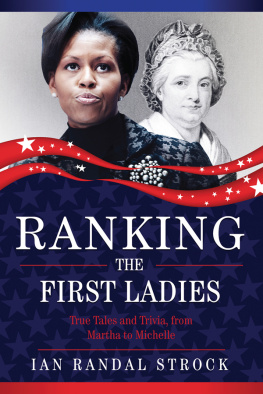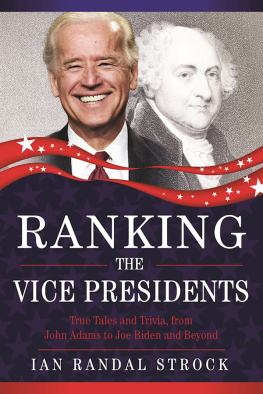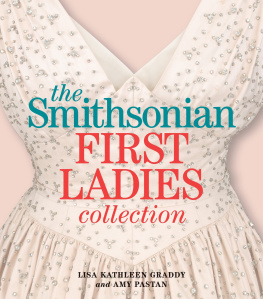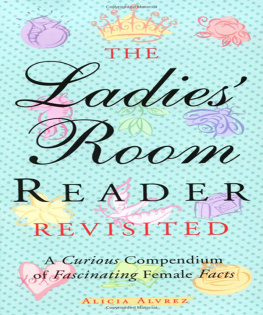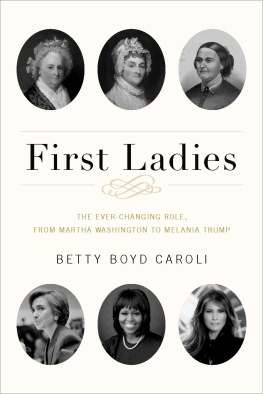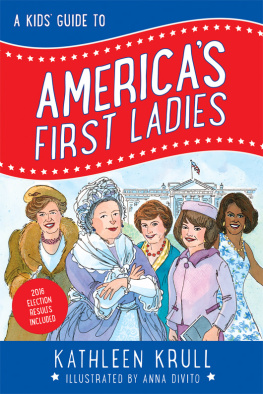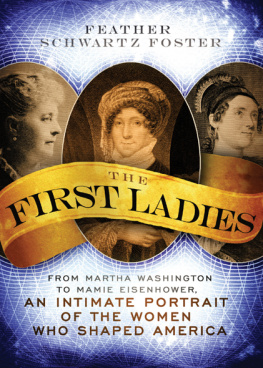Copyright 2016 by Ian Randal Strock
All rights reserved. No part of this book may be reproduced in any manner without the express written consent of the publisher, except in the case of brief excerpts in critical reviews or articles. All inquiries should be addressed to Carrel Books, 307 West 36th Street, 11th Floor, New York, NY 10018.
Carrel Books books may be purchased in bulk at special discounts for sales promotion, corporate gifts, fund-raising, or educational purposes. Special editions can also be created to specifications. For details, contact the Special Sales Department, Carrel Books, 307 West 36th Street, 11th Floor, New York, NY 10018 or .
Carrel Books is a registered trademark of Skyhorse Publishing, Inc., a Delaware corporation.
Visit our website at www.carrelbooks.com.
10 9 8 7 6 5 4 3 2 1
Library of Congress Cataloging-in-Publication Data is available on file.
Cover design by Rain Saukas
Print ISBN: 978-1-63144-058-8
Ebook ISBN: 978-1-63144-060-1
Printed in the United States of America
For Mom.
CONTENTS
INTRODUCTION
W hen I was little, my mother hung a poster in the house, showing the Presidents faces, names, and dates of office. I memorized it.
Soon after that, President Nixon announced his resignation, and my first political memory is asking my parents if that meant that Henry Kissinger would be President, since his was the only other name I knew. My parents explained to me about the Vice Presidency and that Gerald Ford was the new President.
Then I learned more about the Presidentswho they were, what they did, how they came to be Presidentand I developed more and more of an interest in them. I began looking for commonalities, connections between the men whod been President, patterns and signs. What characteristics did they share? What facets of their lives pointed toward their eventual elections? Could I calculate all the numbers to predict who would become the next President? Could I use the information I gathered to earn that post myself?
As it turns out, the answers are equivocal. Using those numbers, I was able to predict Barack Obamas election over John McCain and then his reelection over Mitt Romney. But I did not share those commonalities the Presidents seemed to have, so my odds of getting there are very long indeed.
While I was turning this lifelong interest in the Presidents into my first book ( The Presidential Book of Lists , which Random House/Villard published before the election of 2008), I was also looking at those closest to them: spouses, children, parents, and more. And just as I was fascinated by the Presidents, individually and collectively, their relatives proved to be no less interesting, especially their First Ladies. While they do not fit into the same patterns as easily as the Presidents, they are a varied, accomplished, and interesting lot.
Thus, I am pleased to present this book. Originally conceived as a companion to my first, it has grown into a stand-alone volume. I hope youll enjoy learning more about the First Ladies, as I did in preparing this book.
The First Ladies
I n the early days of the United States of America, the concept of a popularly elected President who would willingly step down from office after a set period of time was remarkable, nearly unprecedented. And when the government was set up, the Presidents spouse was not really considered, and there was no formal legislation surrounding her. Neither was there a generally accepted term. Though the President was called the President or Mr. President, his wife would be known howsoever she requested. Martha Washington was usually called Lady Washington or Mrs. President, and sometimes the term Presidentress was used.
According to legend, President Zachary Taylor was the first to use the term First Lady, when he was eulogizing former First Lady Dolley Madison in 1849. Unfortunately, no record of his eulogy exists.
President James Buchanans niece, Harriet Lane, who was his official hostess, was the first woman to be called First Lady while actually serving in that position. The phrase appeared in print in Frank Leslies Illustrated Monthly in 1860, when he wrote, The Lady of the White House, and by courtesy, the First Lady of the Land. As late as the second decade of the 1900s, other terms were used, including Edith Wilsons preferred Mrs. Presidentress.
Today, the title First Lady of the United States is recognized as the official White House hostess. The last time there was no Presidential wife to fulfill that role was 191415, after Ellen Wilson died and before Woodrow Wilson married Edith Galt. Since then, every Presidents wife has been active in the role, so it has come to be synonymous with the Presidents wife.
The position of the First Lady is not elected, and it has no official duties and no salary. Nevertheless, it has evolved into a post of significant influence. Most First Ladies champion charitable causes and serve as role models. The first First Ladies, Martha Washington and Abigail Adams, came to prominence during the Revolutionary War, and while their husbands were President, they were treated as if they were ladies of the British royal court, elevated supporters of the sovereign. Dolley Madison popularized the role and was cognizant of her position as a role model. She set a standard for many of her successors.
After more than a century of First Ladies confining themselves to the social and supportive aspects of life, Woodrow Wilsons second wife, Edith, broke out of those constraints and greatly (if secretly) expanded the role of First Lady. She is generally assumed to have been acting President for six months following his stroke in 1919. This position was not Constitutional: Vice President Marshall was kept from seeing the President or knowing the full extent of his incapacity. If Marshall had visited the ailing President, it is probable he would have moved to be acting President himself or possibly sought Wilsons removal from the Presidency. But history records that he did not, and Edith always claimed that Woodrow made all the decisions and signed all the papers, which she brought him in private.
It wasnt until Eleanor Roosevelt in the 1930s that the First Lady took on more executive responsibilities. Franklin was wheelchair-bound and thus unable to travel easily. Eleanor took on a lot of travel for her President-husband, performing inspections and meeting the people in places Franklin could not easily go, being seen in public, and coincidentally assuming a position of power herself. Eleanor also recognized her public persona, and in addition to the duties she carried out for the President, she wrote her own syndicated newspaper column and hosted a radio show. After Franklins death, President Truman officially recognized her importance to the country by appointing her US Delegate to the United Nations.
Hillary Clinton was the first First Lady to have a formal job in her husbands Administration, managing its efforts to reform healthcare from her precedent-setting office in the West Wing of the White House.
The Office of the First Lady of the United States handles her hostessing, social, and ceremonial duties. The Office now has a paid staff and is part of the Executive Office of the President, but it wasnt always so.
Caroline Harrisons niece Mary Scott Lord Dimmick (who later married Carolines widowed husband) may have been the first staff member for a First Lady. Mary served as Carolines social secretary. Florence Harding had a funded staff, including a social secretary and an assistant. Eleanor Roosevelt had a staff of only two. At first, they worked out of a second-floor office in the Executive Mansion, but later initiated the use of a First Ladys office in the newly constructed East Wing. Jacqueline Kennedy expanded the First Ladys staff to 40 people, directed by the social secretary. The current Office of the First Lady includes a Chief of Staff, Senior Advisor, Director of Communications, Press Secretary, Director of Strategic Planning, and Director of Special Projects, as well as assistants and more.

